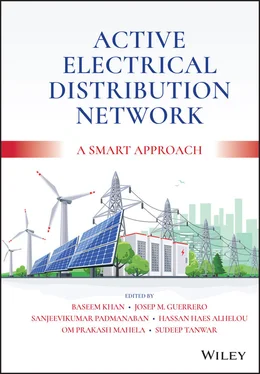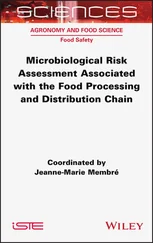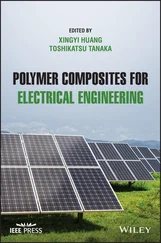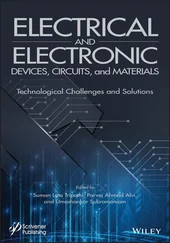
Figure 4.17 Load side frequency spectrum.
4.6.3 Response of DSTATCOM-BESS under an Unbalanced IM Load
The response of the DSTATCOM-BESS system with an unbalanced induction motor (IM) load is depicted in Figure 4.18. It has been visualized that it draws a heavy inrush of current, leading to voltage disturbances. These disturbances were effectively minimized using the proposed DSTATCOM-BESS system by injecting the dynamic reactive power at PCC to regulate the voltage. Similar to previous loading conditions, load unbalancing is created, and it was found that the PCC voltage remains constant during an IM load. During this condition, the terminal voltage is also kept at its reference voltage and the battery starts charging. The grid side and load side harmonics are depicted in Figures 4.19 and 4.20, respectively. The obtained harmonics are well under the international standard IEEE519-2014. Moreover, Table 4.2illustrates the harmonics-based comparative analysis of all considered loads. The perceived results reveal the performance of the DSTATCOM-BESS system.
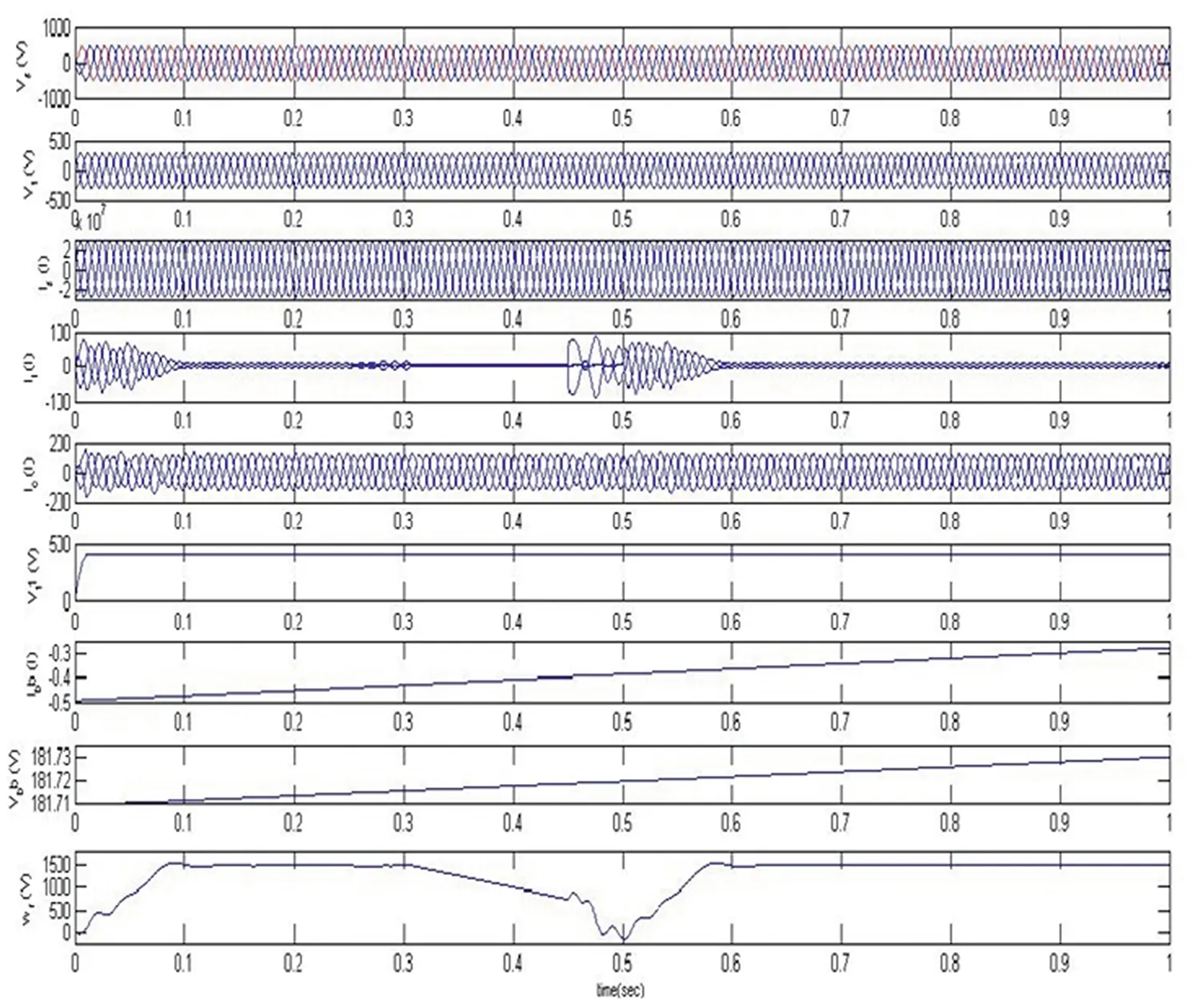
Figure 4.18 Response of DSTATCOM-BESS under an unbalanced motor load.

Figure 4.19 Source side frequency spectrum.
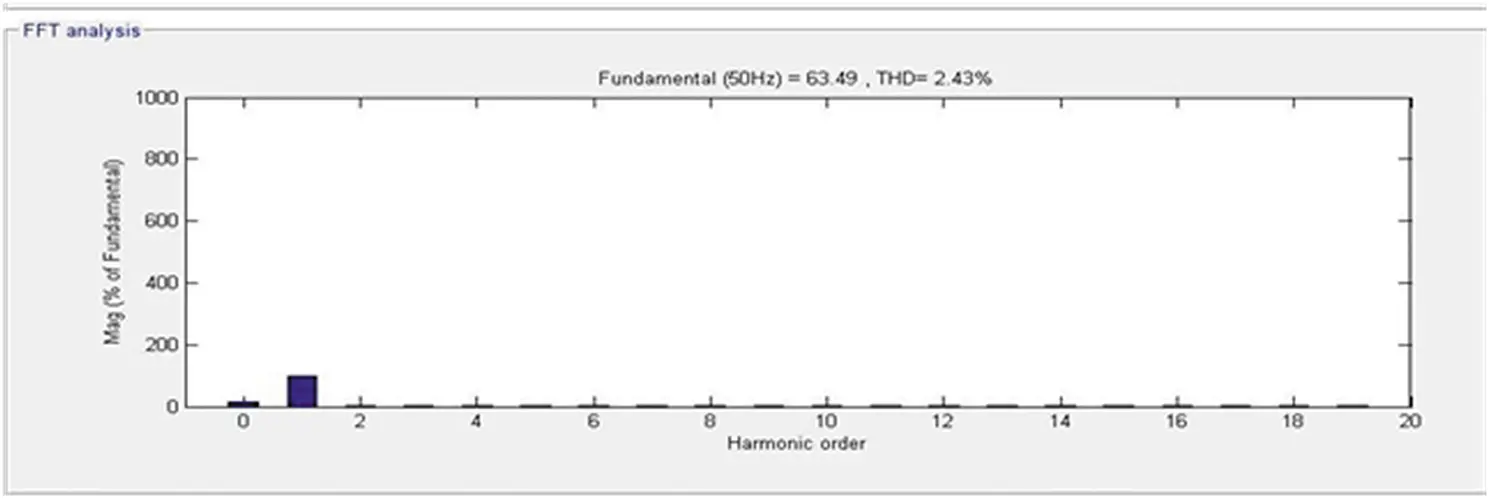
Figure 4.20 Load side frequency spectrum.
Table 4.2 Harmonics analysis under load unbalancing.
| S. No. |
Type of load |
Indirect current control theory controlled DSTATCOM-BESS |
|
| Source side THD |
Load side THD |
| 1 |
Linear load |
0.71% |
0.71% |
| 2 |
Nonlinear load |
0.19% |
30.25% |
| 3 |
Motor load |
0.31% |
2.43% |
An indirect current control theory-based control algorithm has been strongly performed for DSTATCOM-BESS to improve power quality in the presence of balanced/unbalanced linear, nonlinear, and induction motor loads. The sudden changes associated with the active power and reactive power, the dc-link voltage, have been considered in designing the ICCT controlled DSTATCOM-BESS system. The particularized working boundaries of the dc-link voltage in the control algorithm ensure the DSTATCOM reliable operation, which protects the inverter during large load fluctuations. The proposed system has been used to solve the challenges associated with the loading conditions of the distribution network. It has been verified that the system’s power quality is mitigated under the IEEE-519-2014.
1 [ 1] M.T. Lawder, B. Suthar, P.W.C. Northrop, Sumitava De, C.M. Hoff, O. Leitermann, M.L. Crow, S. Santhanagopalan, and V.R. Subramanian, “Battery energy storage system (BESS) and battery management system (BMS) for grid-scale applications,” Proceedings of the IEEE, vol. 102, no. 6, pp. 1014–1030, 2014.
2 [ 2] B. Khan, S. Degarege, F. Mebrahtu, and H. Alhelou, “Energy storage system and its power electronic interface,” Handbook of Research on New Solutions and Technologies in Electrical Distribution Networks, IGI Global, Pennsylvania, United States, pp. 309–321, 2020.
3 [3] P.K.D. Pramanik, N. Sinhababu, B. Mukherjee, S. Padmanaban, A. Maity, B.K. Upadhyaya, J.B. Holm-Nielsen, and P. Choudhury, “Power consumption analysis, measurement, management, and issues: A state-of-the-art review of smartphone battery and energy usage,” IEEE Access, vol. 7, pp. 182113–182172, 2019.
4 [4] R.S. Bhatia, B. Singh, D.K. Jain, and S.P. Jain, “Battery energy storage system based power conditioner for improved performance of hybrid power generation,” In 2008 Joint International Conference on Power System Technology and IEEE Power India Conference, IEEE, pp. 1–6, 2008.
5 [ 5] B. Singh, R. Niwas and S.K. Dube, “Load leveling and voltage control of permanent magnet synchronous generator-based DG set for standalone supply system,” IEEE Transactions on Industrial Informatics, vol. 10, no. 4, pp. 2034–2043, 2014.
6 [ 6] F. Mebrahtu, B. Khan, P. Sanjeevikumar, P.K. Maroti, Z. Leonowicz, O.P. Mahela and H.H. Alhelou, “Harmonics mitigation in industrial sector by using space vector PWM and shunt active power filter,” 2020 IEEE International Conference on Environment and Electrical Engineering and 2020 IEEE Industrial and Commercial Power Systems Europe (EEEIC/I&CPS Europe), IEEE, pp. 1–6, 2020.
7 [ 7] O.P. Mahela and A.G. Shaik, “Topological aspects of power quality improvement techniques: A comprehensive overview,” Renewable and Sustainable Energy Reviews, vol. 58, pp. 1129–1142, 2016.
8 [ 8] G.S. Chawda, A.G. Shaik, M. Shaik, S. Padmanaban, J.B. Holm-Nielsen, O.P. Mahela, and P. Kaliannan,“Comprehensive review on detection and classification of power quality disturbances in utility grid with renewable energy penetration,” IEEE Access, vol. 8, pp. 146807–146830, 2020, doi: 10.1109/ACCESS.2020.3014732.
9 [ 9] “IEEE recommended practice and requirements for harmonic control in electric power systems,” In: IEEE Std 519-2014 (Revision of IEEE Std 519-1992), pp. 1–29, 11 June 2014, New York: IEEE, 2014.
10 [ 10] O.P. Mahela and A.G. Shaik, “Power quality improvement in distribution network using DSTATCOM with battery energy storage system,” International Journal of Electrical Power & Energy Systems, vol. 83, pp. 229–240, 2016.
11 [ 11] E. Hossain, M.R. Tür, S. Padmanaban, S. Ay, and I. Khan, “Analysis and mitigation of power quality issues in distributed generation systems using custom power devices,” IEEE Access, vol. 6, pp. 16816–16833, 2018.
12 [ 12] G.S. Chawda, A.G. Shaik, O.P. Mahela, S. Padmanaban, and J.B. Holm-Nielsen, “Comprehensive review of distributed FACTS control algorithms for power quality enhancement in utility grid with renewable energy penetration,” IEEE Access, vol. 8, pp. 107614–107634, 2020, doi: 10.1109/ACCESS.2020.3000931.
13 [ 13] B. Khan and P. Singh, “Optimal power flow techniques under characterization of conventional and renewable energy sources: A comprehensive analysis,” Journal of Engineering, 2017, pp. 1–16, 2017.
14 [ 14] R.S. Bhatia, S.P. Jain, B. Singh, and D.K. Jain, “Power conditioning of an uncontrolled micro-hydroturbine-driven induction generator for distributed generation using a battery energy storage system,” International Journal of Energy Technology and Policy, vol. 5, no. 5, pp. 604–618, 2007.
15 [ 15] V. Virulkar, M. Aware and M. Kolhe, “Integrated battery controller for distributed energy system,” Energy, vol. 36, no. 5, pp. 2392–2398, 2011.
16 [ 16] G.S. Chawda. “Battery energy storage system for power conditioning of distributed energy system,” M.Tech. Thesis, National Institute of Technology, Kurukshetra, India, June 2013.
17 [ 17] G.S. Chawda and A.G. Shaik, “Fuzzy logic based control algorithm for DSTATCOM connected to weak AC grid,” 2018 2nd International Conference on Power, Energy and Environment: Towards Smart Technology (ICEPE), Shillong, India, pp. 1–6, 2018. doi: 10.1109/EPETSG.2018.8659093.
Читать дальше
